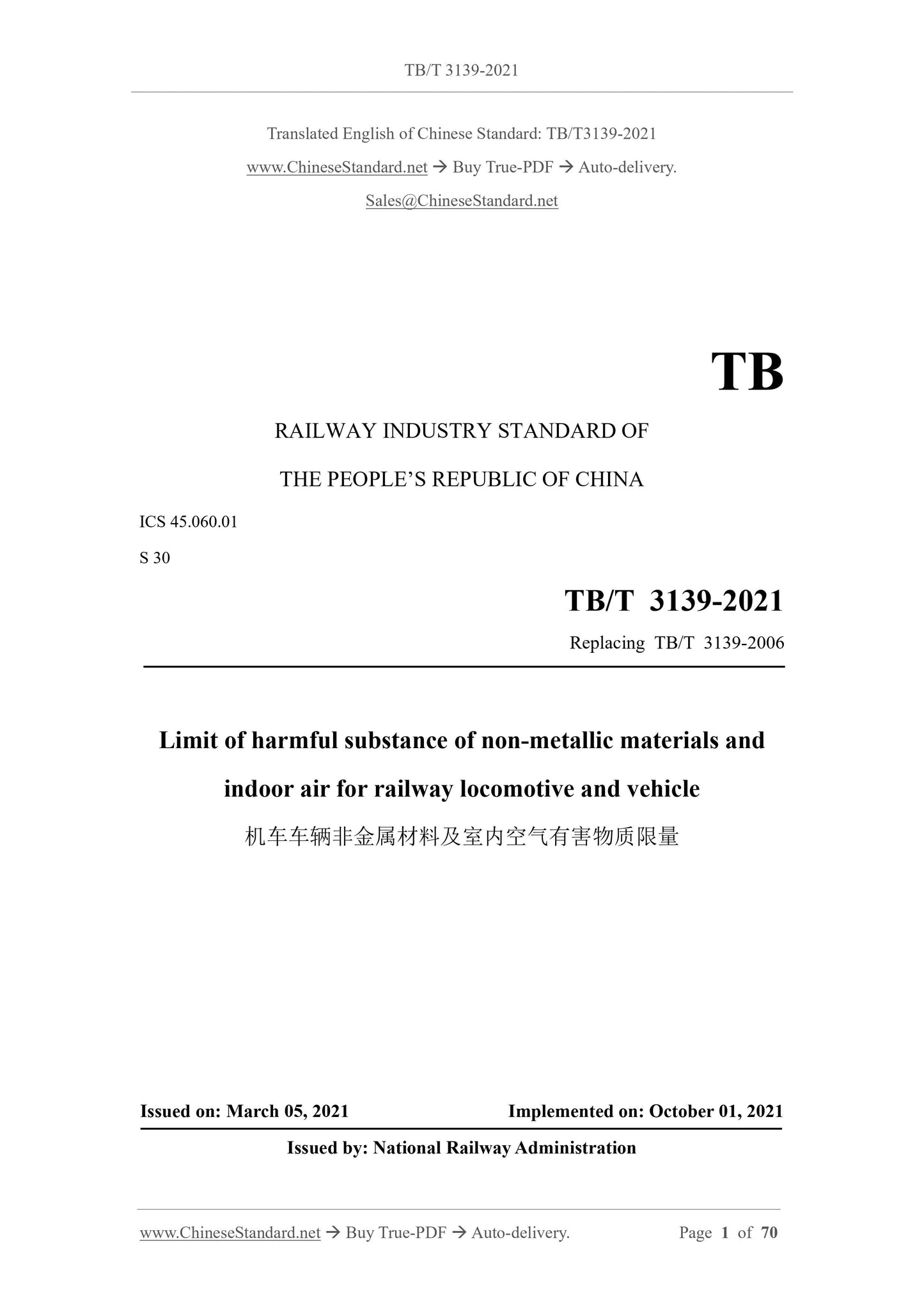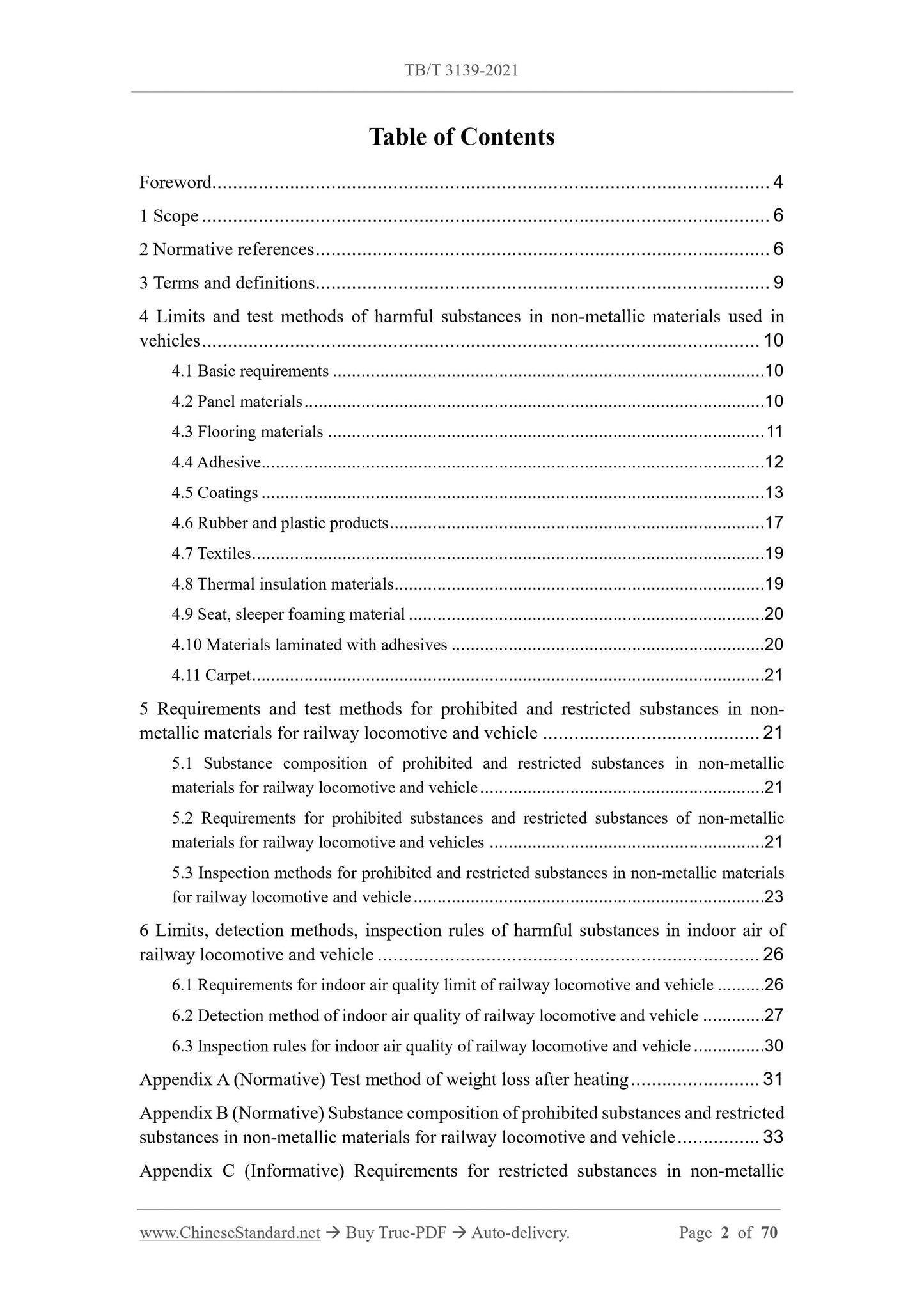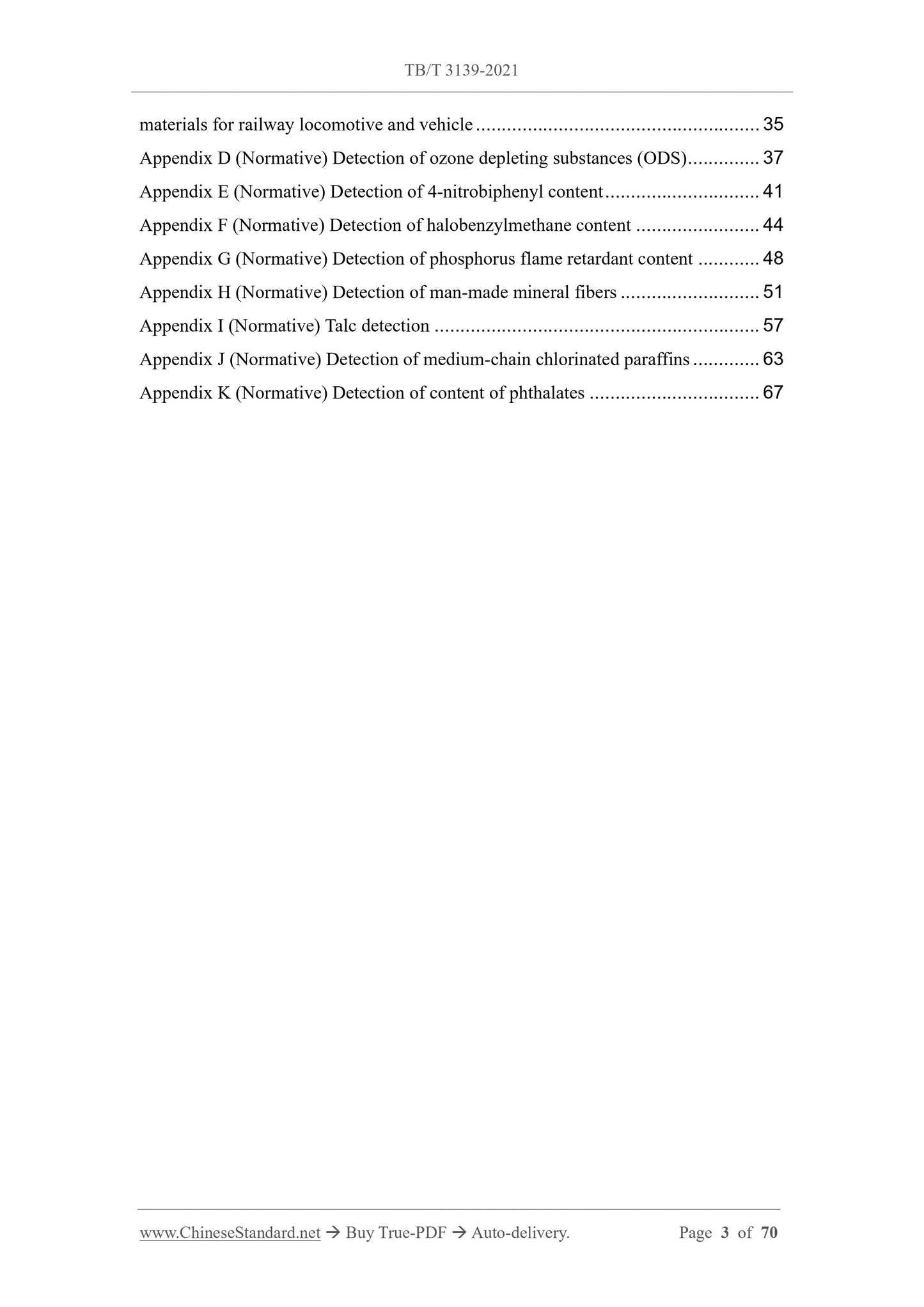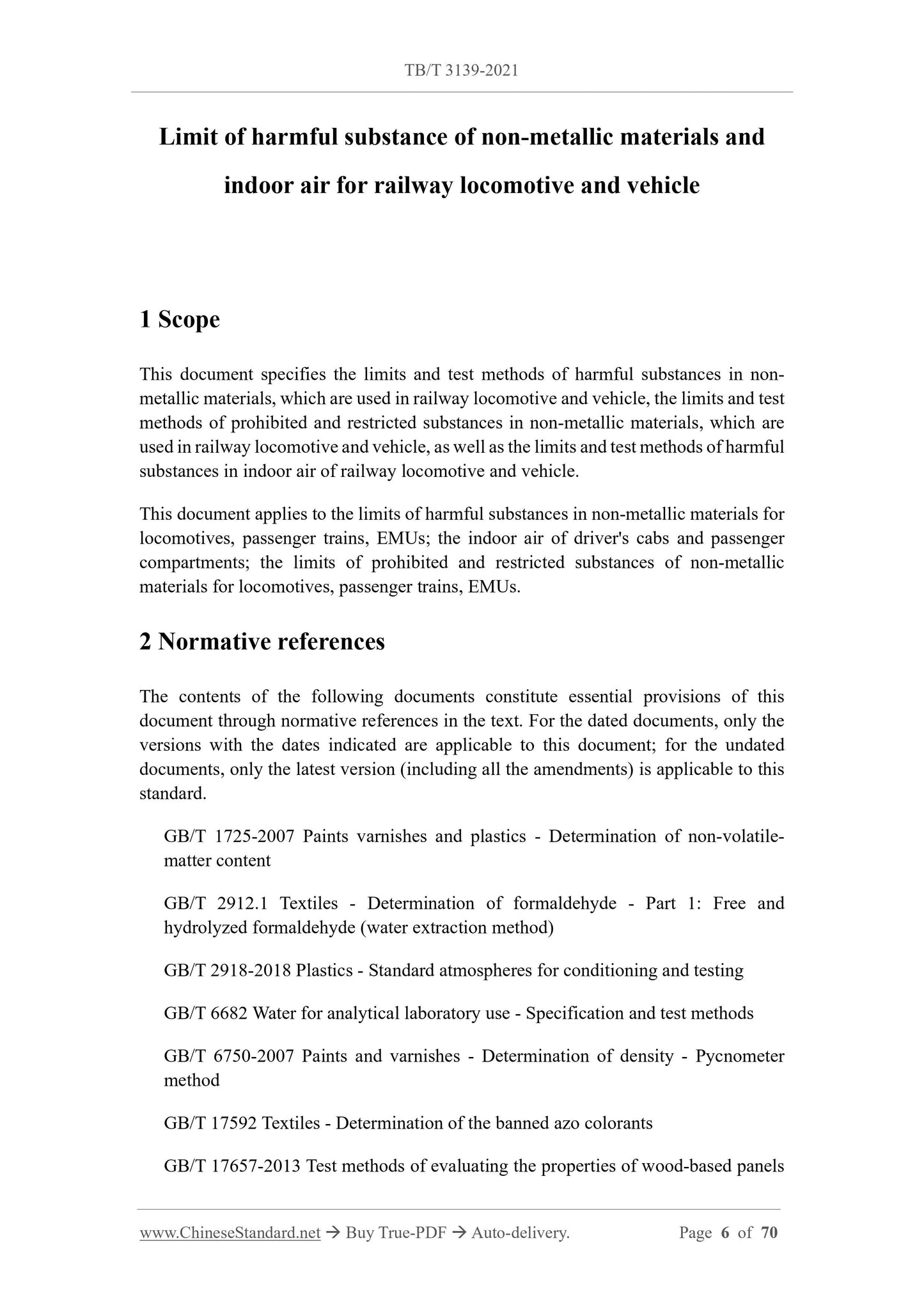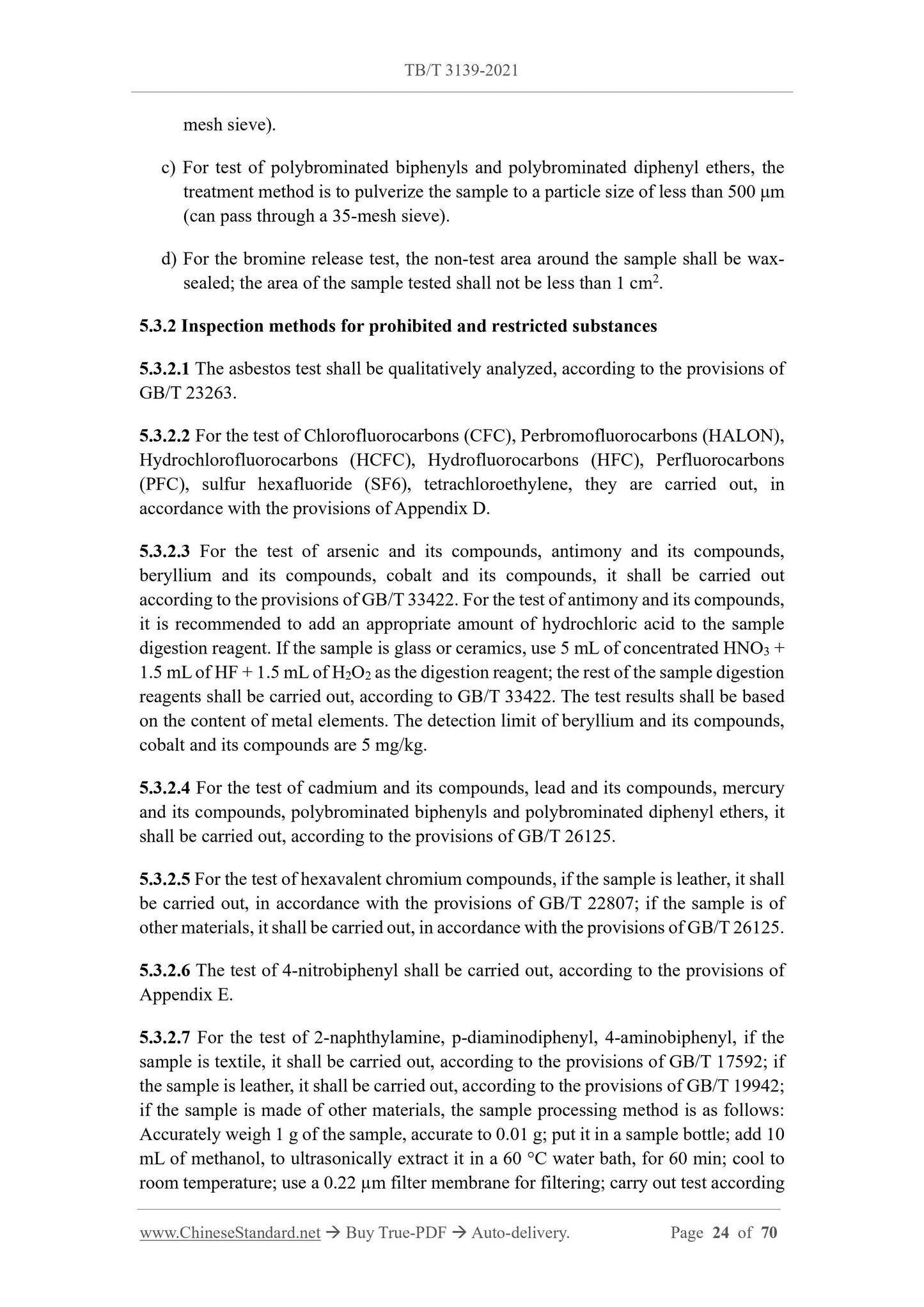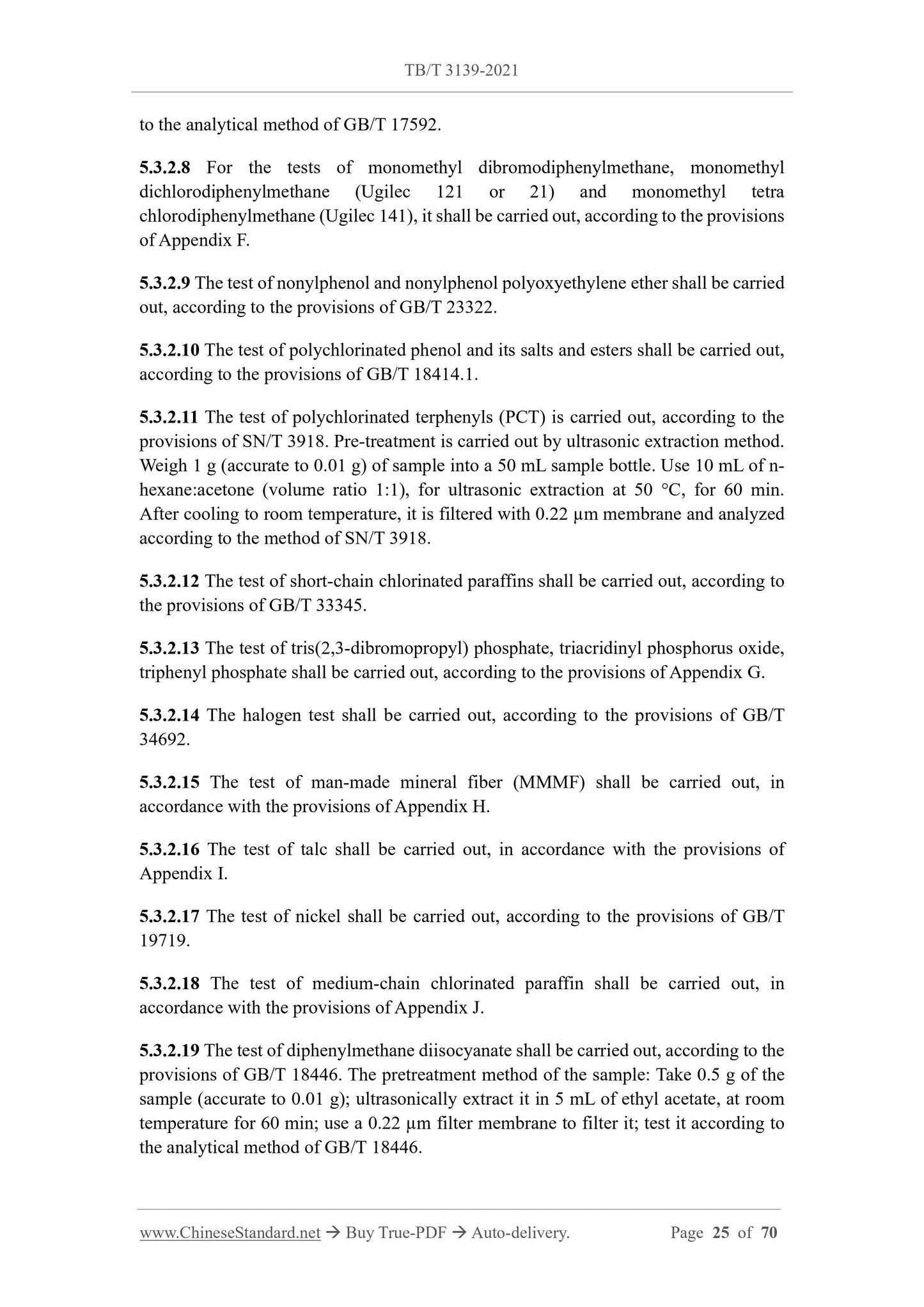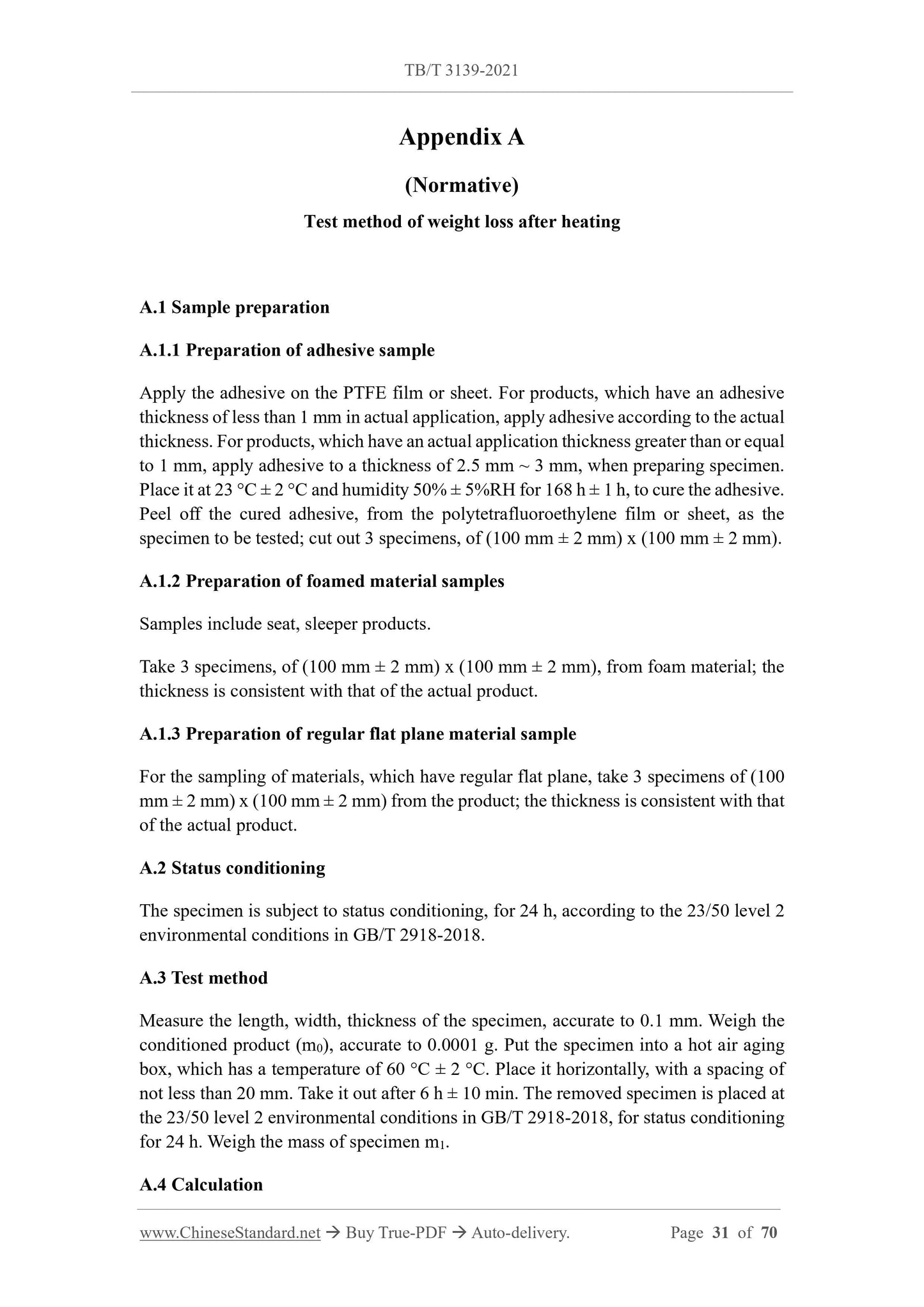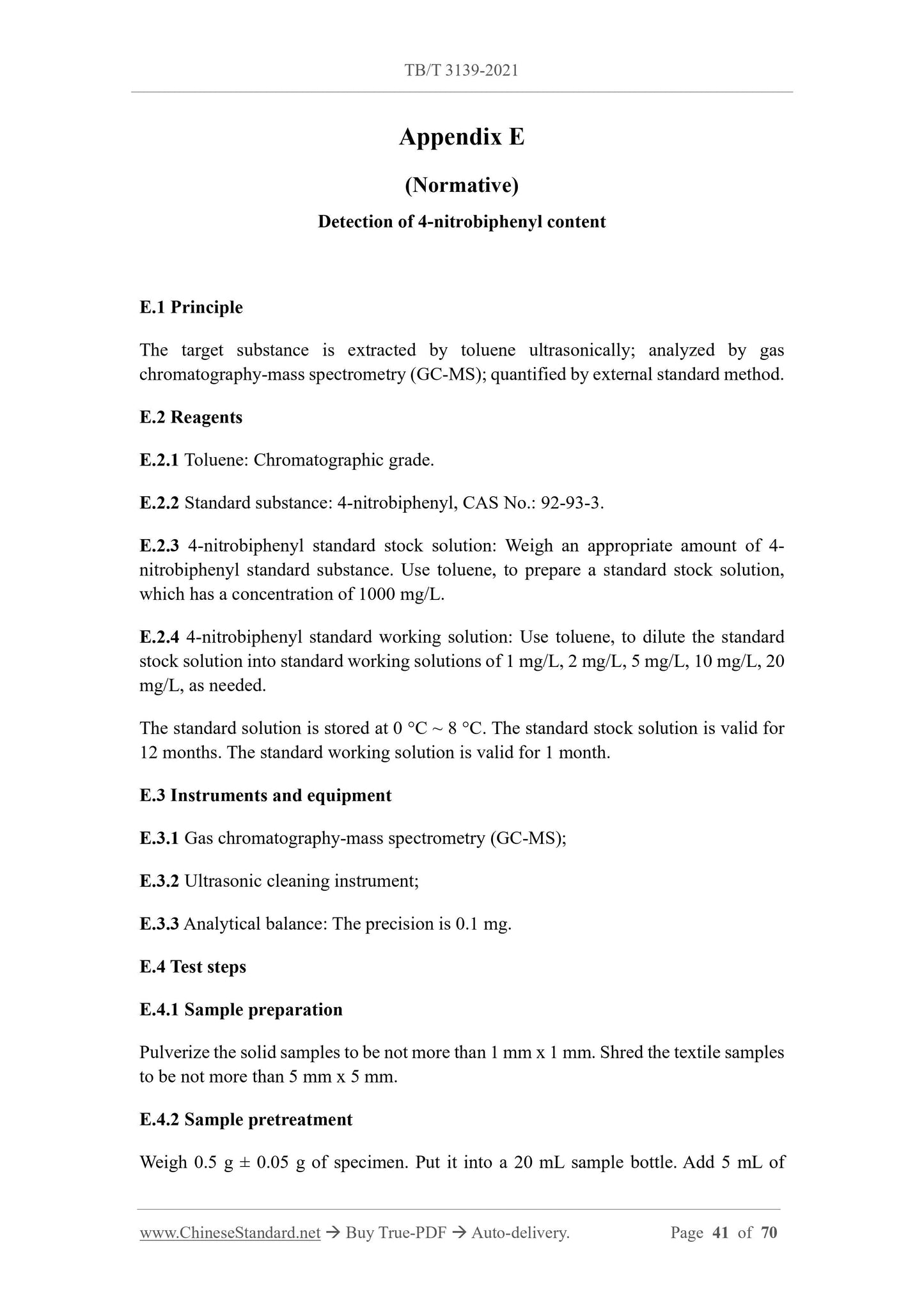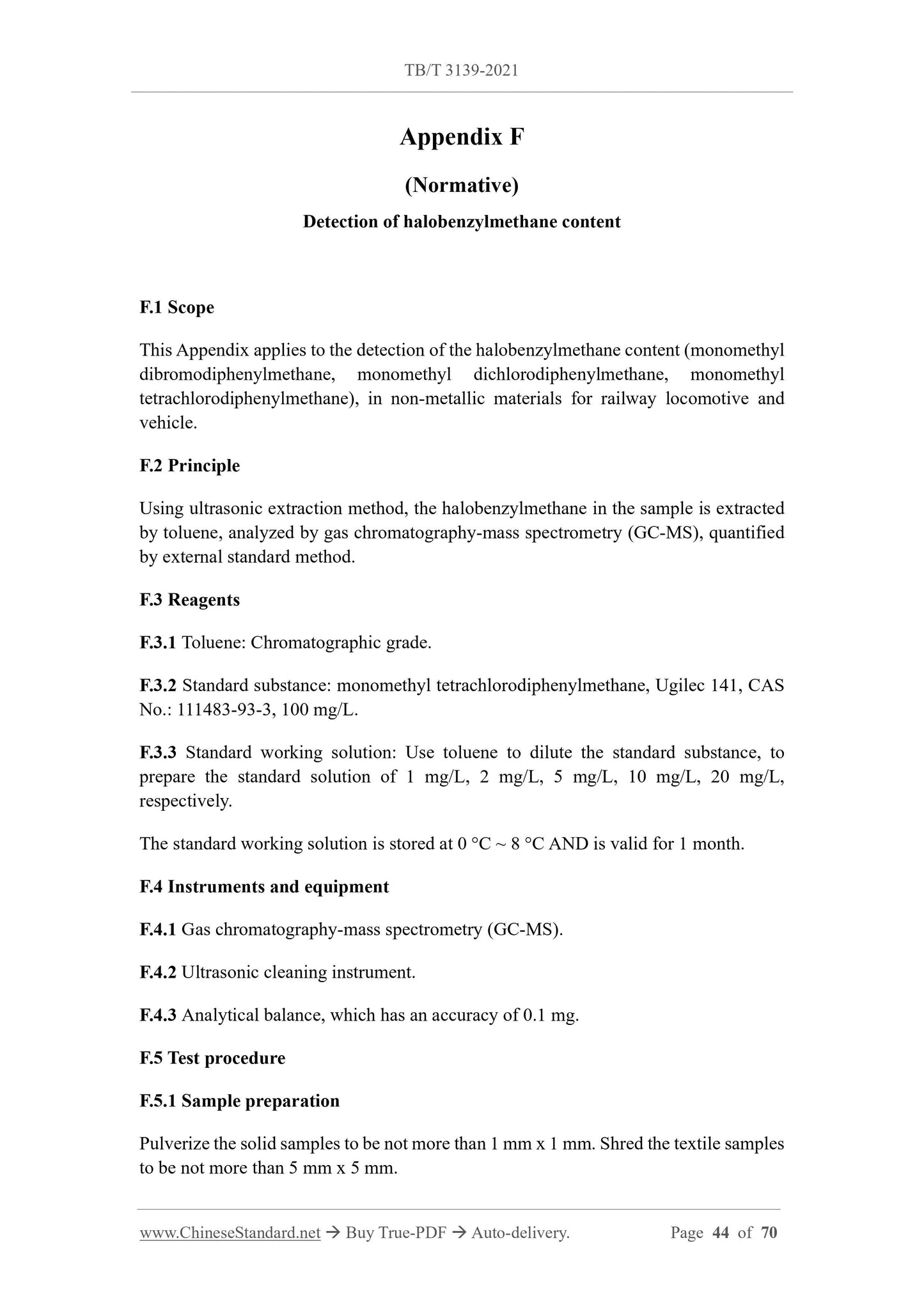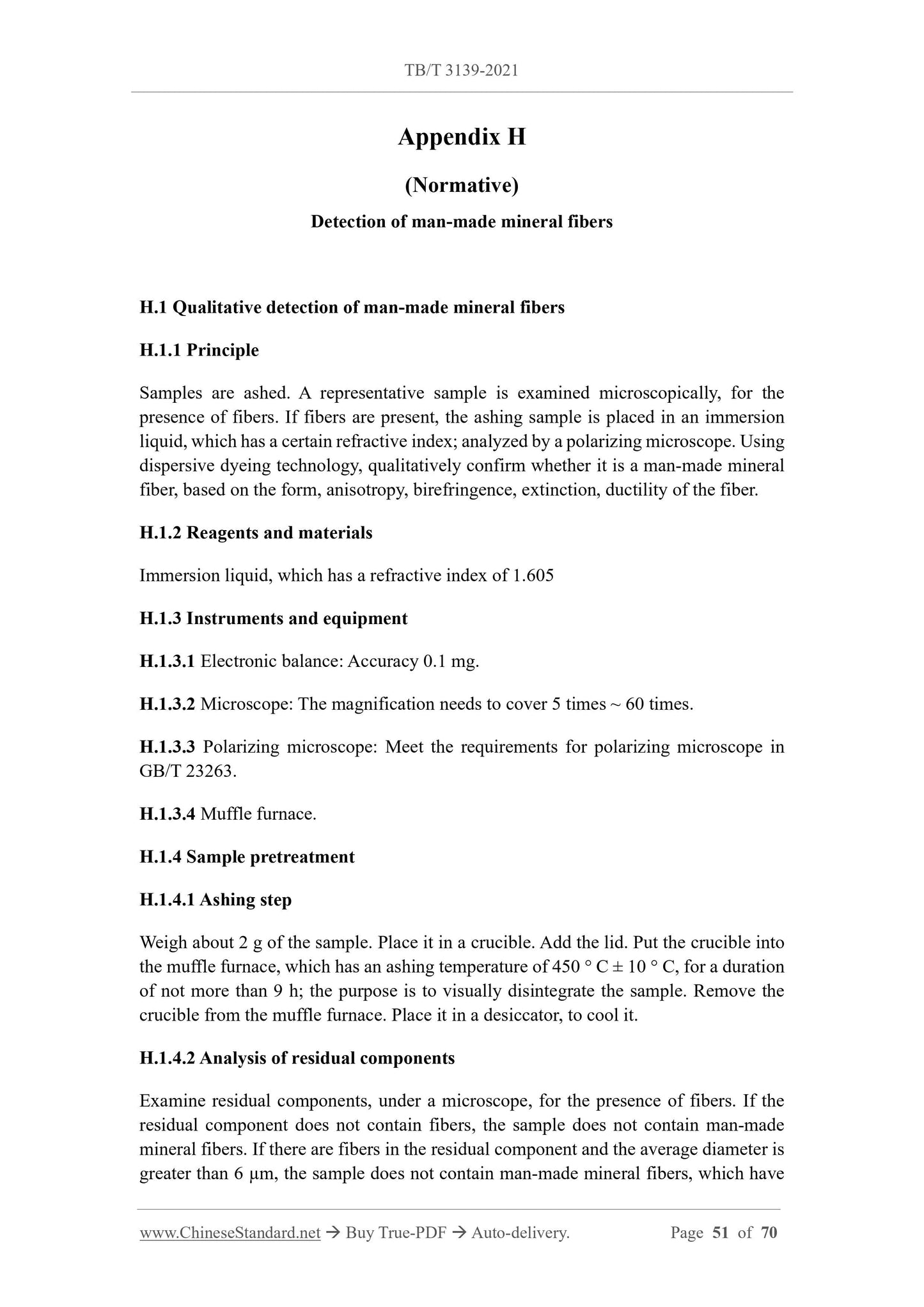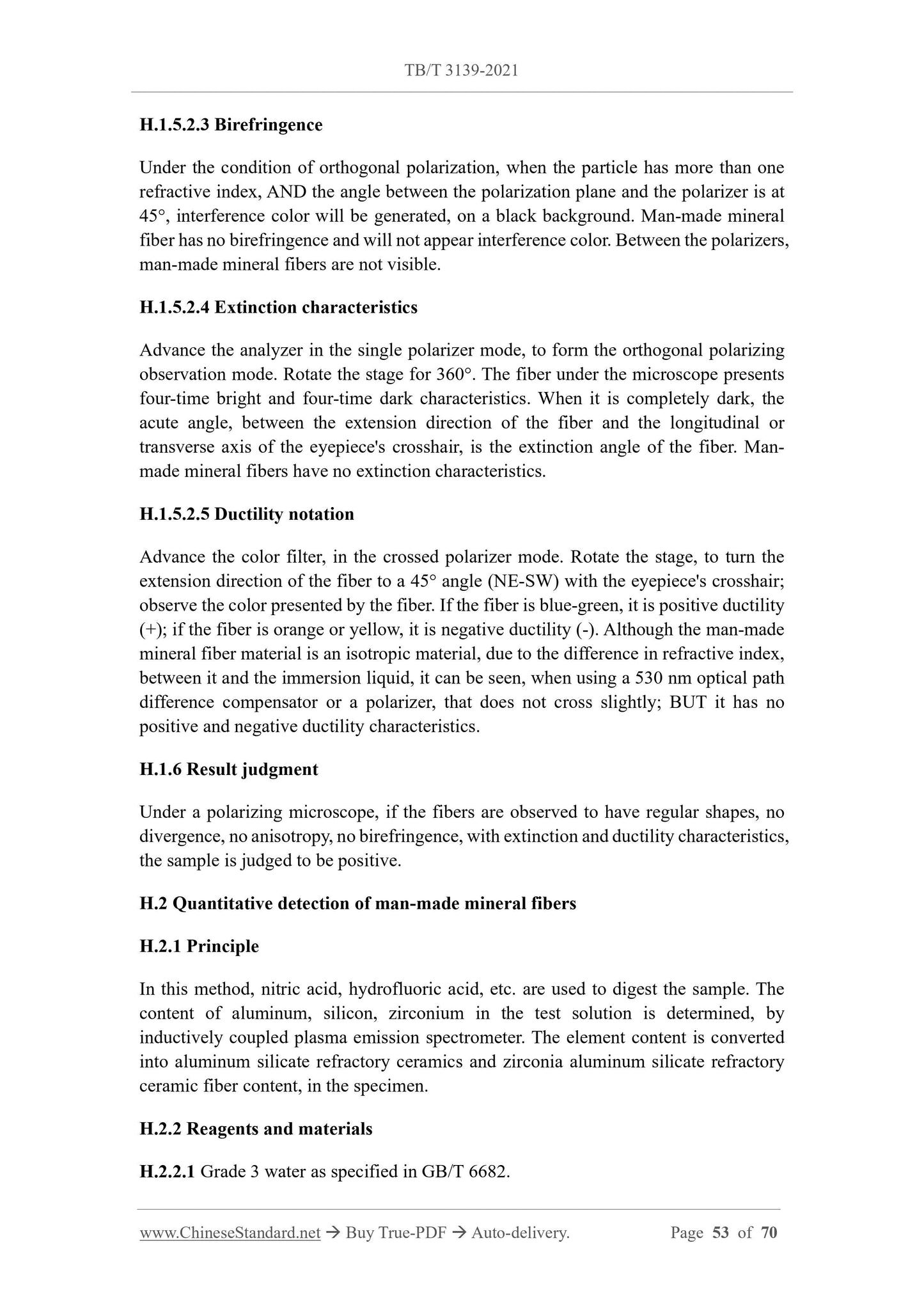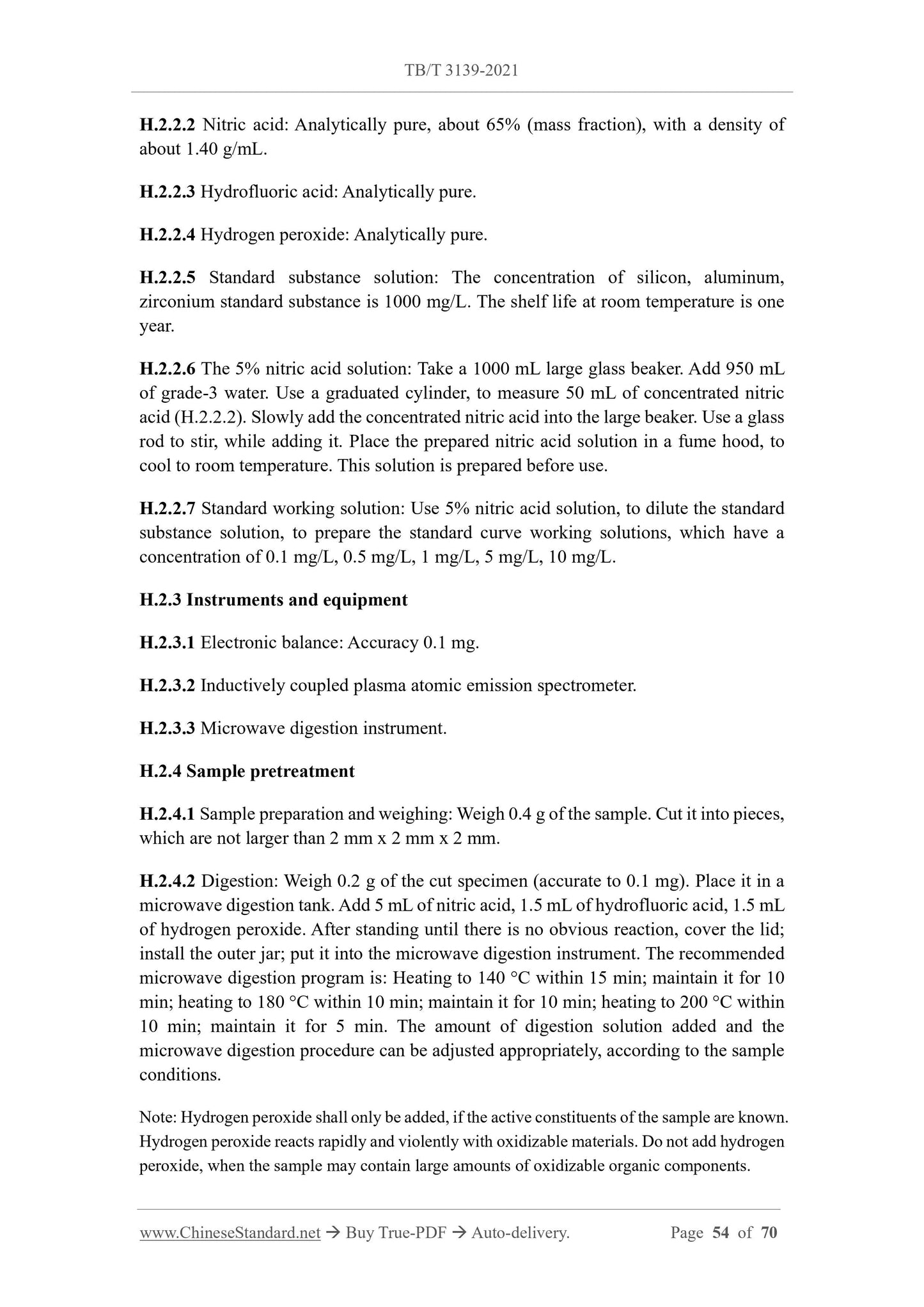1
/
of
12
www.ChineseStandard.us -- Field Test Asia Pte. Ltd.
TB/T 3139-2021 English PDF (TB/T3139-2021)
TB/T 3139-2021 English PDF (TB/T3139-2021)
Regular price
$1,105.00
Regular price
Sale price
$1,105.00
Unit price
/
per
Shipping calculated at checkout.
Couldn't load pickup availability
TB/T 3139-2021: Limit of harmful substance of non-metallic materials and indoor air for railway locomotive and vehicle
Delivery: 9 seconds. Download (and Email) true-PDF + Invoice.Get Quotation: Click TB/T 3139-2021 (Self-service in 1-minute)
Newer / historical versions: TB/T 3139-2021
Preview True-PDF
Scope
This document specifies the limits and test methods of harmful substances in non-metallic materials, which are used in railway locomotive and vehicle, the limits and test
methods of prohibited and restricted substances in non-metallic materials, which are
used in railway locomotive and vehicle, as well as the limits and test methods of harmful
substances in indoor air of railway locomotive and vehicle.
This document applies to the limits of harmful substances in non-metallic materials for
locomotives, passenger trains, EMUs; the indoor air of driver's cabs and passenger
compartments; the limits of prohibited and restricted substances of non-metallic
materials for locomotives, passenger trains, EMUs.
Basic Data
| Standard ID | TB/T 3139-2021 (TB/T3139-2021) |
| Description (Translated English) | Limit of harmful substance of non-metallic materials and indoor air for railway locomotive and vehicle |
| Sector / Industry | Railway and Train Industry Standard (Recommended) |
| Classification of Chinese Standard | S30 |
| Word Count Estimation | 52,586 |
| Issuing agency(ies) | National Railway Administration |
Share
